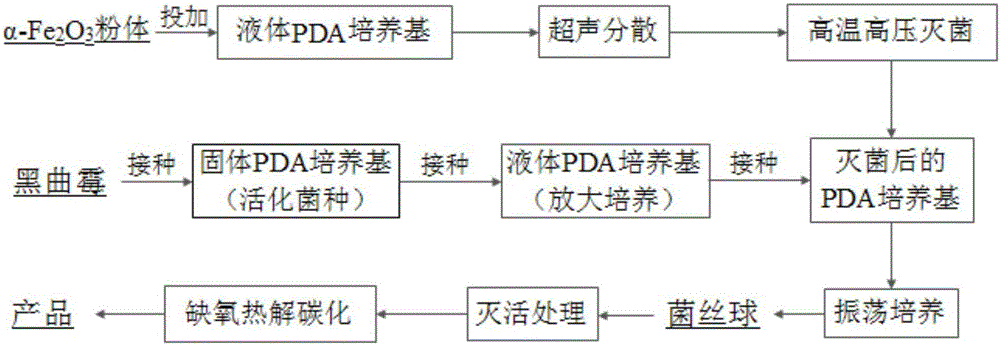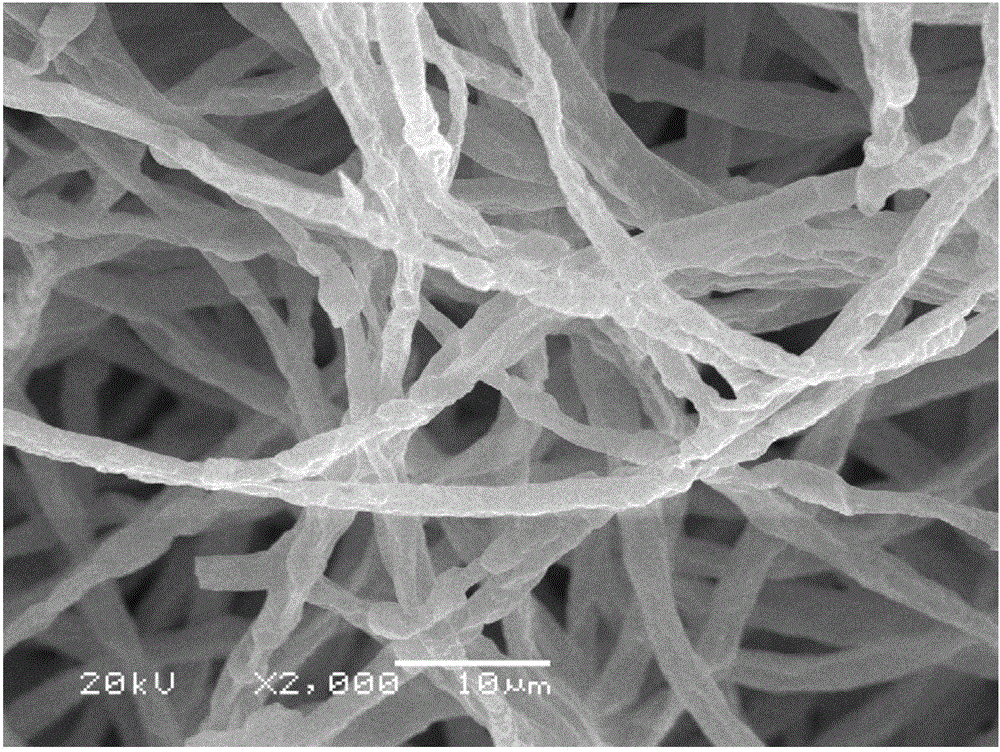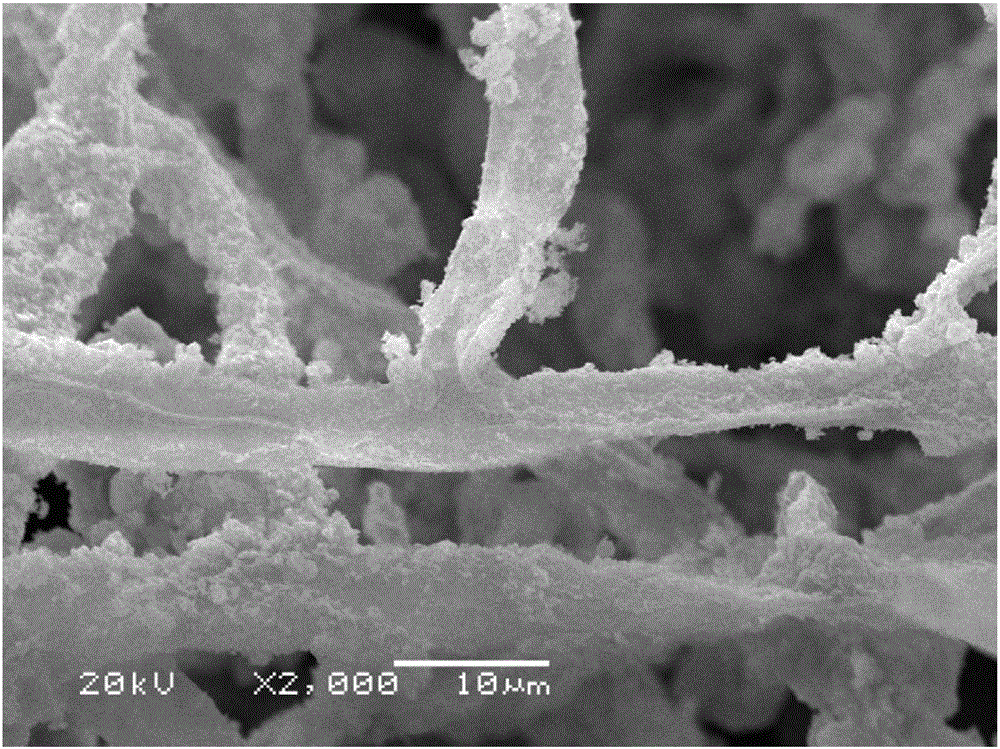Iron-based biochar material as well as preparation and application thereof
A biochar, iron-based technology, applied in applications, soil conditioning materials, organic fertilizers, etc., can solve problems such as the increase of arsenic, and achieve the effects of extremely low production cost, high adsorption capacity, and clean and sustainable process.
- Summary
- Abstract
- Description
- Claims
- Application Information
AI Technical Summary
Problems solved by technology
Method used
Image
Examples
Embodiment 1
[0038] Prepare the iron-based biochar material for repairing arsenic-contaminated soil of the present invention:
[0039] (1) Use PDA medium to activate and expand the cultivation of Aspergillus niger (Aspergillus niger), purchased from China Center for Type Culture Collection, strain number CCTCCAF91006;
[0040] (2) 1.0g of α-Fe 2 o 3 Add nanoparticles (particle size99.5%) into 200mL of liquid PDA medium, and disperse for 2h with an ultrasonic wave with a power of 100W;
[0041] (3) will contain nano-α-Fe 2 o 3 Put the PDA culture medium into a high-temperature and high-pressure sterilizer, set at 115°C, and sterilize for 25 minutes. After high-temperature and high-pressure sterilization, the culture medium was transferred to an ultra-clean aseptic operating table, and sterilized with an ultraviolet lamp for 60 minutes;
[0042] (4) In the ultra-clean aseptic operation bench, inoculate the activated mycelium in step (1) into the sterilized medium of step (3), the inocul...
Embodiment 2
[0049] The soil was taken from a realgar mine waste dump. After being air-dried, impurity-removed and ground, the soil was passed through a 18-mesh nylon sieve. The pH value of the soil was 7.73, and the water-soluble As in the soil was 33.18mg / kg.
[0050] The iron-based biochar material of Example 1 and pure nano-α-Fe were respectively 2 o 3 (Nano α-Fe is contained in the iron-based biochar material 2 o 3 Quantity and weighed pure nano-α-Fe 2 o 3 equal amounts, both 0.2g) into 5.0g of arsenic-contaminated soil, add deionized water according to the water-to-soil mass ratio of 2:1, and stir until uniform. After one week of fixation, water-soluble arsenic in the soil was extracted with 50 mL of deionized water. After testing, arsenic-contaminated soil was treated with iron-based biochar materials or pure nano-α-Fe 2 o 3 The content of water-soluble As in the soil before and after treatment is shown in Table 1 below.
[0051] Table 1 Water-soluble content of arsenic-con...
Embodiment 3
[0054] The soil was taken from a realgar mine waste dump. After being air-dried, impurity-removed and ground, the soil was passed through a 18-mesh nylon sieve. The pH value of the soil is 7.73, and the available As in the soil is 288.17mg / kg.
[0055] The iron-based biochar material of Example 1 and pure nano-α-Fe were respectively 2 o 3 (Nano α-Fe is contained in the iron-based biochar material 2 o 3 Quantity and weighed pure nano-α-Fe 2 o 3 equal amounts, both 0.2g) into 5.0g of arsenic-contaminated soil, add deionized water according to the water-to-soil mass ratio of 2:1, and stir until uniform. After one week of fixation, use 50 mL of 0.5 mol / L NaHCO 3 Extract the available arsenic in the soil. After testing, arsenic-contaminated soil was treated with iron-based biochar materials or pure nano-α-Fe 2 o 3 The content of available As in the soil before and after treatment is shown in Table 2 below.
[0056] Table 2 Content of available As in arsenic-contaminated s...
PUM
 Login to View More
Login to View More Abstract
Description
Claims
Application Information
 Login to View More
Login to View More - R&D
- Intellectual Property
- Life Sciences
- Materials
- Tech Scout
- Unparalleled Data Quality
- Higher Quality Content
- 60% Fewer Hallucinations
Browse by: Latest US Patents, China's latest patents, Technical Efficacy Thesaurus, Application Domain, Technology Topic, Popular Technical Reports.
© 2025 PatSnap. All rights reserved.Legal|Privacy policy|Modern Slavery Act Transparency Statement|Sitemap|About US| Contact US: help@patsnap.com



